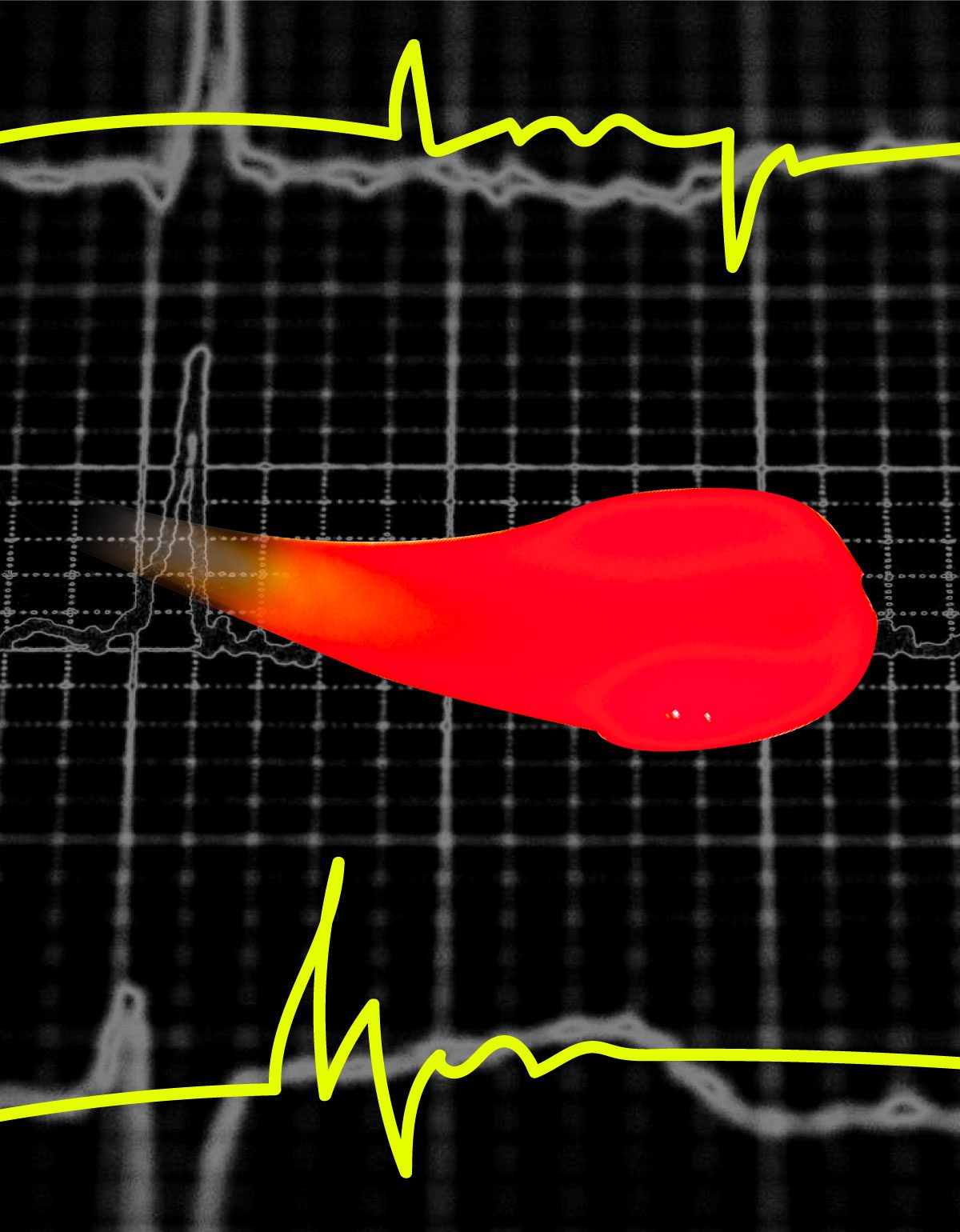Your period: The fifth vital sign—here’s why
Medical professionals agree that menstruation is a key indicator of overall health
You’re probably familiar with the “we’re talking about something slightly taboo” cues that come up when a conversation turns to periods. The awkward laughs, standard that-time-of-the-month jokes, and starting every question or anecdote with “Sorry, this might be TMI but…”
The thing is, your period can be as critical an indicator of health as your heart rate or blood pressure. We shouldn’t be afraid to discuss it with the same kind of straightforward attitude.
Periods can tell us a lot about our bodies. Irregularities or sudden changes may be symptomatic of nutrient deficiencies, reproductive issues, and bleeding disorders. And yet—despite the wealth of medical research that proves it—periods are often overlooked by healthcare professionals when evaluating patients.
At Flex®, it’s our mission to destigmatize periods and support menstrual health—and, in turn, the overall health of menstruators. So get out your giggles, set aside any discomfort, and gear up for some real talk about periods.
What is a vital sign?
You’ve probably heard doctors shouting to “check their vitals!” on TV…but what are they even? The short answer: measurements of basic bodily functions. Traditionally, medical professionals routinely monitor four vital signs—blood pressure, body temperature, pulse, and respiration rate.1
They’re useful because they can quickly indicate if someone is okay, or very not okay. For example:
- With blood pressure (literally the pressure in your arteries), anything higher than 120/80 mm Hg can indicate that you’re at a higher risk of stroke or heart attack.1
- A pulse is the pace at which your heart beats. If higher than 80 beats per minute, it may indicate an abnormal heart rhythm or another heart issue.
- Our body temperature (your internal ambient temperature) should generally be between 97.8 °F and 99.1 °F.1 Fevers can indicate an illness or an infection1. On the flip side if your temp drops below 95 °F you’ve got hypothermia.
- Respiration rate (how many breaths an individual takes in a minute) should lie between 12-20 breaths.1 Any major deviations might indicate an illness, respiratory condition, heart failure, or drug overdose.1

The case for making menstruation the fifth vital sign
The average person (especially someone who doesn’t menstruate) probably considers no period a sign of one thing and one thing only: pregnancy. Maybe their minds will go to menopause. But that’s usually where things end.
However, any change in your period can be a major warning sign that something is wrong, and not just with your reproductive functions. Changes to look for in your period include: increase in flow, new pain, or the absence of it entirely.
Yes: losing your period (known as secondary amenorrheaThe absence of menstruation, often defined as missing one or more menstrual periods. ) may come as a result of pregnancy, breastfeeding, menopause, or birth control. But it can also be tied to other issues like severe stress, extreme weight fluctuation, nutrient deficiencies, overexercising, conditions such as PCOS, or other illnesses.2
In rarer cases, it can even be a sign of hormonal issues, ovarian tumors, or issues with your hypothalamus. It can also signal pituitary disorders, or early menopause.2
All of which is to say, menstruation is a critical indicator of overall health. So why does it so often go overlooked? Multiple factors are at play; for example, medicine has been a male-dominated field, but nowadays, with the growing number of female OBGYNs and far more information available and accessible, this is starting to change for the better. In addition, the outdated belief that talking about periods is taboo, and therefore menstruators are not really used to describing their menstrual cycles as part of their symptomatology.
It doesn’t need to be overlooked, shameful, or hidden. We menstruate most of our lives and our reproductive health ties directly to our overall health. Measuring periods may not offer the same degree of universality as the traditionally accepted vital signs. Nevertheless, it certainly has the same regularity, reliability, and potential to provide clarity.
Interpreting your period: normal vs abnormal
Doctors often evaluate periods based on what’s normal for a particular patient. For example, a sudden change in your period can be a greater cause for concern than experiencing lifelong menstrual irregularities.
However, some things are still typically considered abnormal. Even if you’ve experienced them for years; when in doubt, always speak to an OB/GYN. If you’re not sure what a “normal period” looks like, they’re generally characterized as:
- Lasting 2-7 days, with your heaviest flow occurring over the first 3 days.3
- Having a total menstrual cycle length that lasts between 21 and 45 days. This is the number of days from the first day of your period to the last day of your next period.3
- Having mild side effects, like moderate cramping, headaches, or mood changes.

How to monitor menstrual cycle: Cycle tracking is key
Again, what’s normal for you will not always be normal for someone else. And that’s completely fine—as long as you fall within relatively normal bounds for menstruation (i.e. you have a fairly regular cycle, your flow isn’t too light or too heavy, you don’t experience debilitating or severe pain, etc.), and you don’t experience any sudden changes to your cycle.
Whatever your “normal” is should be your menstrual baseline…which is why it’s so important to track your cycle. Not sure how to monitor your menstrual cycle? We cover that next.
Make sure to note the day of the month when your period begins and when it ends. This alone should help you start to identify what’s regular (or irregular) for your body.
However, we’d suggest going a little further and noting a few other elements of your menstruation. For example, how heavy your flow is at various points in your cycle. You can also note if there are any other symptoms, like dizziness, nausea, cramps, energy level, headache, and mood changes. If you want a little extra help, a number of cycle tracker apps exist that make cycle tracking super easy.
Most health apps and period tracker apps will let you track whether you are using any form of birth control, or not. You can also estimate your ovulation days based on your period cycles. However, if you are trying to conceive we suggest using an ovulation test to track your fertility window with greater precision. The basal body temperature method involves taking your temperature every morning using a basal body thermometer, to predict when you’re ovulating.
Whether you have a regular or an irregular cycle, consistent cycle tracking will teach you about what’s regular for your body. Maybe your periods always come right on time, maybe your menstrual cycle is longer or shorter than the normal range, and maybe you always get headaches right before your period. Whatever you discover will help you more easily identify any irregularities in the future.

Making menstruation an official vital sign: next steps
Obstetricians and gynecologists from the American College of Obstetricians and Gynecologists have issued statements declaring that menstruation should be made the next vital sign—especially when it comes to treating and diagnosing adolescent girls.4
Before that can happen, however, the general public (that’s you) needs to show support. Awareness is key, and it starts with destigmatizing the conversation around periods and teaching people how irregular menstruation—whatever that means for the individual—can signal health conditions.
For now, start by treating your period like the vital sign it is. Track your cycle, stay sensitive to any changes. If you have any concerns, consider talking to an OB/GYN or physician right away—it could make all the difference.
Your menstrual health: Key Takeaways
- Vital signs are measurements of basic bodily function that help us monitor on our overall health.
- The four currently recognized vital signs are blood pressure, pulse, respiratory rate, and body temperature.
- Menstruation has all of the makings to serve as the fifth vital sign, even though traditional medicine currently doesn’t recognize it.
- Your menstrual pattern can signal major issues, from nutrient deficiencies to reproductive issues and blood clotting problems. Any health data can easily serve as a signal to healthcare providers.
- Pay attention to your periods and track them if you can. To start your period calendar simply take notes on a notepad or use a period tracking app.
- Only you know what’s normal for your body, and having a good sense of your baseline can help you catch potential issues early on.
- Destigmatize periods and encourage others to talk about the idea of menstruation as the fifth vital sign.
This article is informational only and is not offered as medical advice, nor does it substitute for a consultation with your physician. If you have any gynecological/medical concerns or conditions, please consult your physician.
© 2025 The Flex Company. All Rights Reserved.
- Vital Signs. (n.d.). Cleveland Clinic. https://my.clevelandclinic.org/health/articles/10881-vital-signs[↩][↩][↩][↩][↩][↩]
- AmenorrheaThe absence of menstruation, often defined as missing one or more menstrual periods. & secondary amenorrheaThe absence of menstruation, often defined as missing one or more menstrual periods. : Causes, diagnosis & treatment. (n.d.). Cleveland Clinic. https://my.clevelandclinic.org/health/diseases/3924-amenorrhea[↩][↩]
- Heavy and abnormal periods. (n.d.). ACOGACOG stands for the American College of Obstetricians and Gynecologists (a professional membership organization for obstetrician–gynecologists).. https://www.acog.org/womens-health/faqs/heavy-and-abnormal-periods[↩][↩]
- Menstruation in girls and adolescents: Using the menstrual cycle as a vital sign. (n.d.). ACOGACOG stands for the American College of Obstetricians and Gynecologists (a professional membership organization for obstetrician–gynecologists).. https://www.acog.org/clinical/clinical-guidance/committee-opinion/articles/2015/12/menstruation-in-girls-and-adolescents-using-the-menstrual-cycle-as-a-vital-sign[↩]
